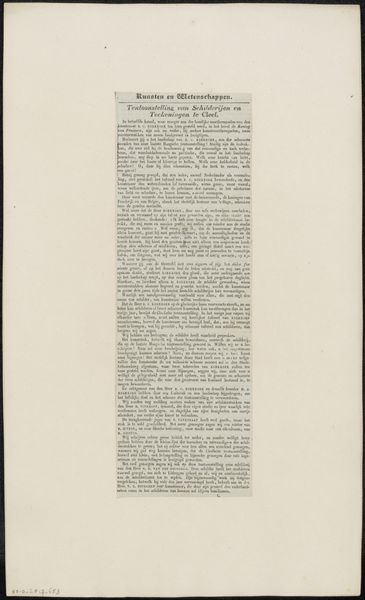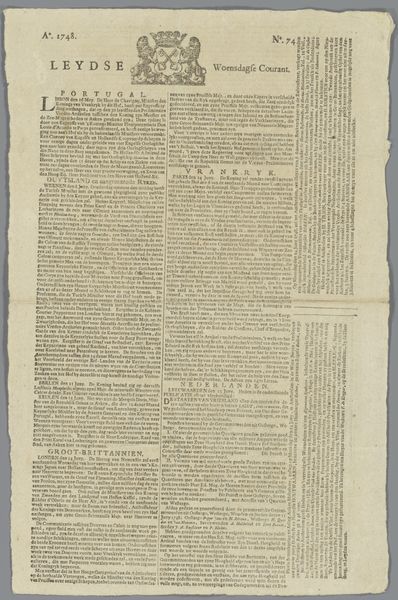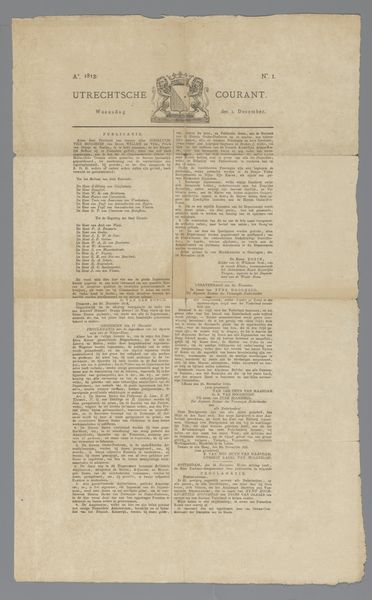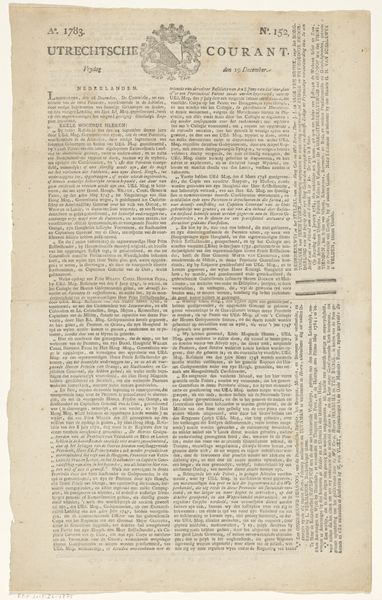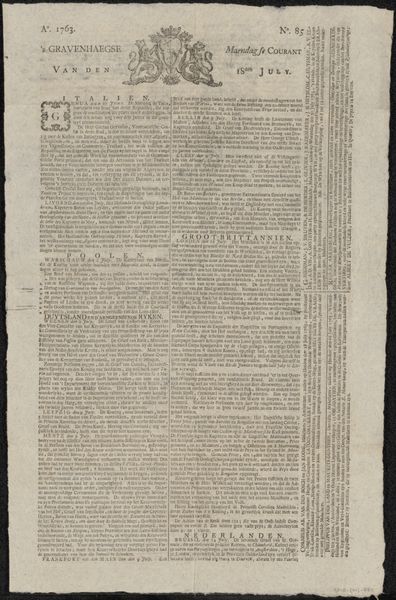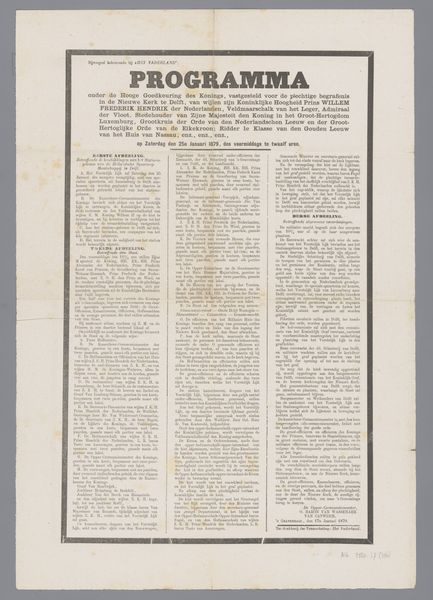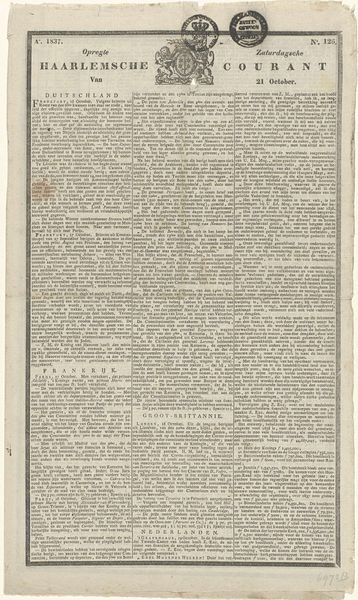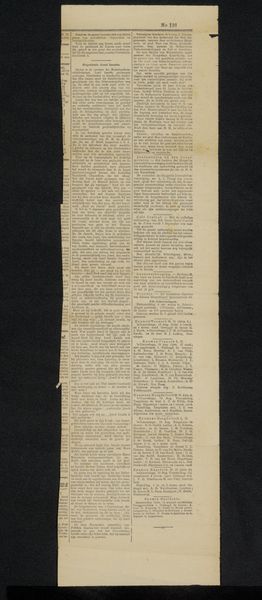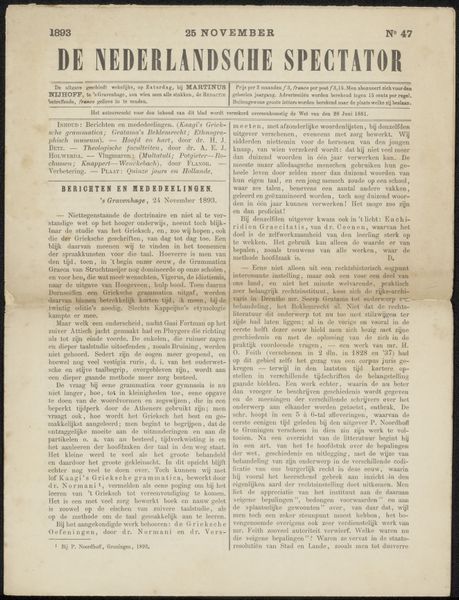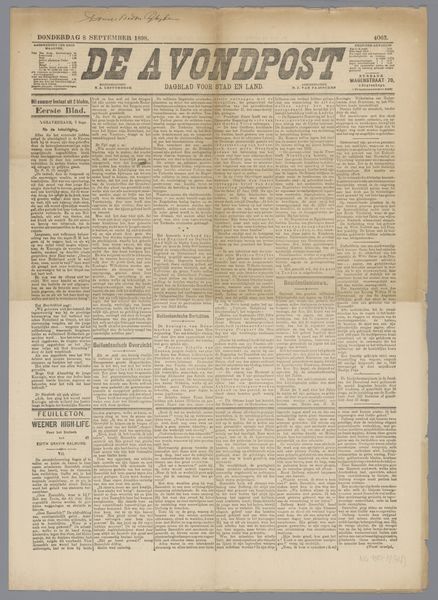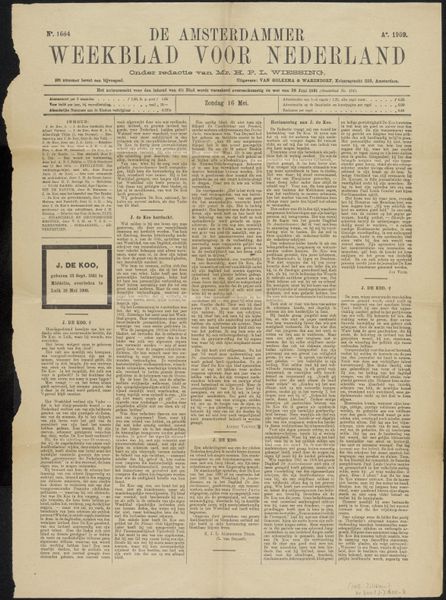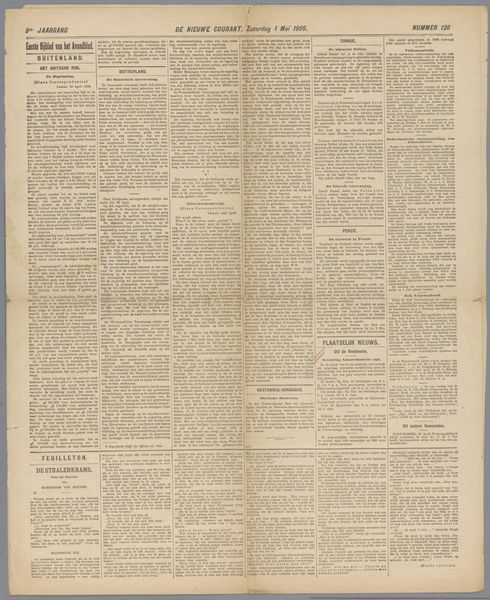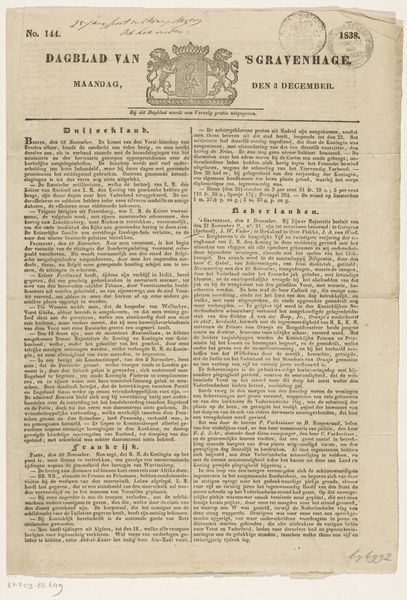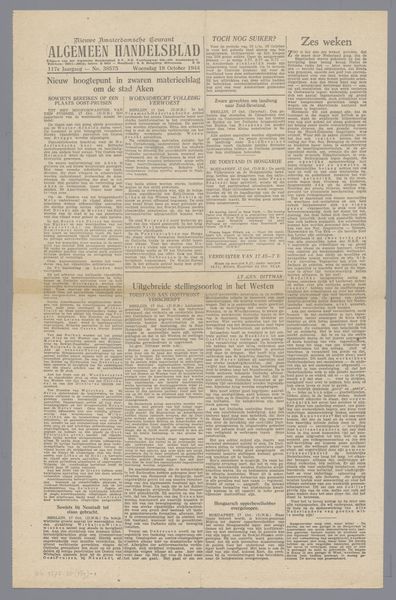
Krantenknipsel betreffende G. F. Monkshood en William James Clarke, 'Rudyard Kipling: An Attempt at Appreciation' 1899
0:00
0:00
print, textile, paper, photography
# print
#
textile
#
paper
#
photography
Copyright: Rijks Museum: Open Domain
Curator: This brittle newspaper clipping, dated 1899, holds an essay titled 'Rudyard Kipling: An Attempt at Appreciation', reflecting on the work of the famous author. The piece itself, made of paper and printed with text and photography, seems almost ghostly. What do you see in this piece? Editor: It feels like a portal to the past, doesn't it? To me, it's more than just text; it feels like a time capsule revealing cultural attitudes toward literature and artistry at the close of the 19th century. But why an appreciation of Kipling specifically, and what does this newspaper clipping tell us about the social and institutional context that fostered Kipling's fame? Curator: Exactly. Consider the timing; 1899. The British Empire was at its zenith, and Kipling was its poet laureate, celebrating its reach and supposed glory. This "Attempt at Appreciation" then becomes a window into how empire was perceived and propagated through print. Who was this article's intended audience, and how does it uphold or critique Kipling and empire? Editor: So it's not just about literary analysis, but understanding how social forces are working to disseminate, bolster, or challenge figures like Kipling, in periodicals and photographic newspapers like this one? Curator: Precisely. Museums, galleries, and print media played active roles in shaping perceptions and canonizing artists and writers. They were spaces of cultural production just as much as the writer's study or artist's studio. Is it naive to see the museum as apolitical, given the imperialist origins and agendas involved in their collections? Editor: I never thought about periodical publications as doing this work too; now I’ll always be attentive to that. Thank you! Curator: And I have now been thinking, by our discussion, how our engagement with this printed matter and photograph—this ephemeral newsprint from the 19th century—sheds new light on enduring legacies.
Comments
No comments
Be the first to comment and join the conversation on the ultimate creative platform.
